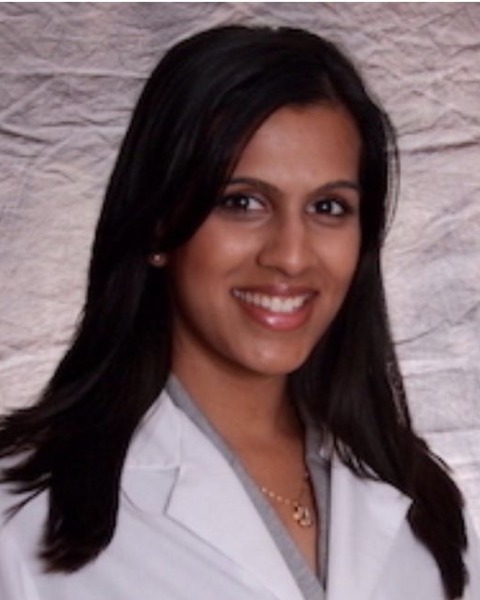Perinatal and public health genetic screening
32- Experiences of Black Pregnant People Offered Prenatal Diagnosis in the Setting of Fetal Anomalies: A Qualitative Study
Tuesday, June 11, 2024
5:00 PM – 7:00 PM ET
Location: The Gallery

Asha Nikesh Talati, MD (she/her/hers)
Assistant Professor, Maternal Fetal Medicine & Clinical Genetics
University of North Carolina at Chapel Hill
Chapel Hil, North Carolina, United States
Presenter(s)
Introduction: To describe the experiences of Black pregnant people who were offered prenatal diagnosis for ultrasound diagnosed fetal anomalies.
Methods: Individuals who received prenatal diagnostic care at a tertiary care medical center, had ultrasound detected fetal anomalies, and were offered genetic counseling and amniocentesis were eligible (IRB #20-3411). Individuals participated in a 45 minute semi-structured interview, completed a demographic survey, and the Everyday Discrimination Scale,. All interviews were performed by race-concordant interviewers (KSA and AS). A rapid qualitative analysis using the NIHMD framework was performed. Scores from the Everyday Discrimination Scale were calculated using descriptive statistics.
Results: 8 individuals who self-identify as Black have been interviewed thus far. Maternal demographic characteristics included: median age 28 [IQR 20-37], 6 (75%) at least some college, 7 (88%) were employed. 5 individuals had multiple fetal anomaly phenotypes, 2 patients had fetal hydrops fetalis, and 1 patient had fetal acrania. Three of 8 patients had an amniocentesis; all of these individuals worked in healthcare (medical assistant, nurse, physician). Major themes regarding patient experience included lack of representation in genetic medicine, logistical challenges of receiving a diagnosis, and needing to advocate for self during the process(table 1). Mean Everyday Discrimination scale score was 23 (IQR 14-37); all individuals attributed their experiences to Black race/ancestry.
Conclusions: In this qualitative study, individuals did not describe concern about genetic data or privacy when undergoing prenatal diagnosis, but did describe significant societal and healthcare factors that impacted their experience.
Authors: Asha Talati, University of North Carolina at Chapel Hill; Karen Sheffield Abdullah, University of North Carolina at Chapel Hill; Aryana Sheree Daye, University of North Carolina at Chapel Hill; Marsha Michie, Case Western Reserve University; Anne Drapkin Lyerly, University of North Carolina at Chapel Hill; Kelly Gilmore, University of North Carolina at Chapel Hill; Neeta Vora, University of North Carolina - Chapel Hill
Methods: Individuals who received prenatal diagnostic care at a tertiary care medical center, had ultrasound detected fetal anomalies, and were offered genetic counseling and amniocentesis were eligible (IRB #20-3411). Individuals participated in a 45 minute semi-structured interview, completed a demographic survey, and the Everyday Discrimination Scale,. All interviews were performed by race-concordant interviewers (KSA and AS). A rapid qualitative analysis using the NIHMD framework was performed. Scores from the Everyday Discrimination Scale were calculated using descriptive statistics.
Results: 8 individuals who self-identify as Black have been interviewed thus far. Maternal demographic characteristics included: median age 28 [IQR 20-37], 6 (75%) at least some college, 7 (88%) were employed. 5 individuals had multiple fetal anomaly phenotypes, 2 patients had fetal hydrops fetalis, and 1 patient had fetal acrania. Three of 8 patients had an amniocentesis; all of these individuals worked in healthcare (medical assistant, nurse, physician). Major themes regarding patient experience included lack of representation in genetic medicine, logistical challenges of receiving a diagnosis, and needing to advocate for self during the process(table 1). Mean Everyday Discrimination scale score was 23 (IQR 14-37); all individuals attributed their experiences to Black race/ancestry.
Conclusions: In this qualitative study, individuals did not describe concern about genetic data or privacy when undergoing prenatal diagnosis, but did describe significant societal and healthcare factors that impacted their experience.
Authors: Asha Talati, University of North Carolina at Chapel Hill; Karen Sheffield Abdullah, University of North Carolina at Chapel Hill; Aryana Sheree Daye, University of North Carolina at Chapel Hill; Marsha Michie, Case Western Reserve University; Anne Drapkin Lyerly, University of North Carolina at Chapel Hill; Kelly Gilmore, University of North Carolina at Chapel Hill; Neeta Vora, University of North Carolina - Chapel Hill